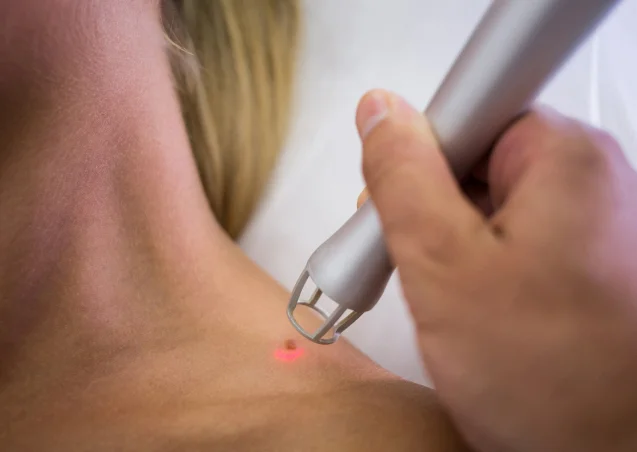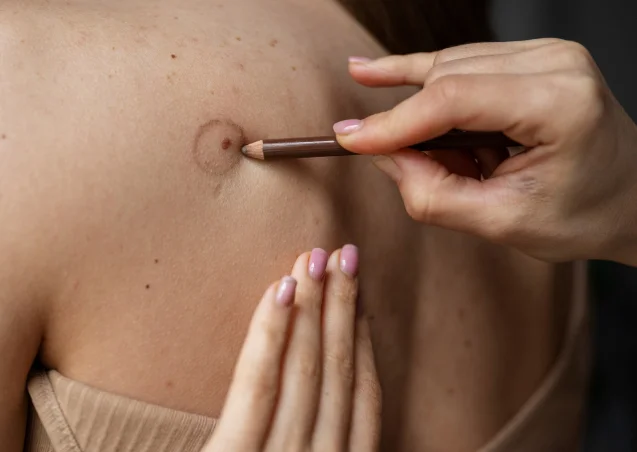
Moles also known as nevus are growths on the skin caused by clusters of pigment forming cells called melanocytes; some flat and others raised and range in colour from natural skin tone to brown or black. Moles can appear anywhere on the body including face trunk plams and soles. Most moles appear in early childhood and during first twenty years of life.
Most moles don't require any treatment. Mole removal is indicated if :

Most moles don't require any treatment. Mole removal is indicated if :
A mole may turn cancerous into malignant melanoma. So one should know the warning signs and remember as ABCDE signs.
Moles can be raised or flat against the skin. A normal mole should have two matching sides. Moles having two halves that differ from one another are asymmetrical and needs a medical examination.
A healthy mole will typically have a consistent shape and clearly defined borders. If a mole has unclear, hazy or irregular border; it warrants consultation with a dermatologist.
Most moles have a pretty consistent shade. A mole with arbitrary shades of tan, brown, red and blue can be a sign of skin cancer and needs medical examination by a dermatologist.
As a general thumb rule any mole > 6mm or 1/4 inch ie greater than tip of a eraser on a pencil top; should be examined by dermatologist.
Moles that evolve, grow or change in colour or shape, develop recurrent scabs, or develop small pimple like lesions that fails to heal by 3-5 weeks, having oozing or bleeding, itchy in nature warrants immediate medical examination to exclude skin cancer.